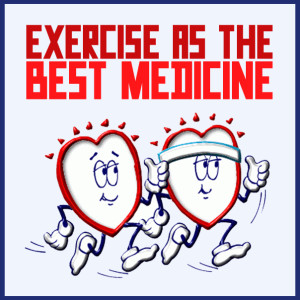As soon as we walk through the recovery program doors, we are greeted with enthusiastic welcomes and familiar smiles. For the past two years, three of my friends and I have been leading exercise workshops at a rehabilitation program for patients overcoming addiction. At first I was nervous about how our program would be received. Would the clients be annoyed by our presence? Would they want to participate in our exercise routines?
My initial fears were immediately assuaged. Clients profusely thanked us for the workshops, saying they looked forward to the opportunity to exercise. They pushed themselves in the routines, aiming to increase the amount of sit-ups and pushups they could complete, and trying to hold plank for 15 seconds longer each session. One client, who stood front and center at each class, told me the euphoria he felt when exercising lessened his desire to relapse and gave him hope for a better future.
Substance abuse can be debilitating for both patients and their loved ones. It is characterized by continued use of a harmful substance to the point of preoccupation with and loss of control over the substance. This results in multiple efforts to cut down without success, ongoing use despite knowledge of the problem, use of larger amounts over a longer period of time than intended, and significant time, money, and energy spent to obtain the substance. Often, substance abuse is accompanied by tolerance and withdrawal, but neither are necessary or sufficient for its diagnosis. The most commonly abused substances are alcohol, tobacco and marijuana, and other harmful substances include cocaine, LSD, amphetamines, PCP, benzodiazepines, barbiturates and opioids.
Addiction involves several neuronal pathways, involving dopamine, GABA, glutamate, serotonin, as well as exogenous opioids and cannabinoids. Two populations are most prone to addiction — older persons who exhibit poor judgment and teens who engage in more risky behaviors.
How is substance abuse traditionally treated?
First and foremost, patients need to have the motivation to quit. Patients typically go through the following six stages in their recovery from addiction:
- Pre-contemplation: The patient is not yet ready to take steps towards recovery.
- Contemplation: The patient is considering taking steps towards recovery.
- Predetermination/Determination: The patient has decided to begin recovery.
- Action: The patient initiates steps towards recovery.
- Maintenance: The patient continues with their action plan.
- Recovery or Relapse: The patient either recovers or relapses into substance abuse.
Physicians play an important role in each of these stages in motivating the patient towards recovery. Techniques that can be used include medications, such as methadone for opioid addiction, or patches and lozenges, such as nicotine for smokers, to reduce dependence on the abused drug in a safe manner to avoid withdrawal. Other techniques are cognitive behavioral therapy to motivate and support the patient, as well as treatment of co-morbid psychiatric conditions that may be afflicting the patient and hindering recovery.
Can exercise help?
Exercise has been considered as beneficial adjunctive therapy for patients suffering from substance abuse. Weinstock et al. conducted a study with 182 addicts enrolled in intensive outpatient therapy. Half were enrolled in exercise related activity and half were not; those who exercised exhibited longer periods of abstinence than their peers. Similar benefits have been found in adolescents. In one study, 74 adolescents were enrolled in a drug intervention program that had a built-in eight to nine week fitness activity class. Participants were monitored for improvement in the time they took to run one mile, the amount of sit-ups and push they could complete in one minute, their flexibility, and their percent body fat. Thirty-nine adolescents showed improvement in these activities, and those who improved reported significantly less depression, anxiety and substance abuse.
The mechanism behind these results has also been investigated. Lynch et al. suggest that exercise plays different roles during the various stages of addiction. During the initiation and withdrawal phases, exercise benefits by enhancing dopamine transmission. Once addiction develops, the success of exercise lies in its ability to normalize dopaminergic and glutaminergic signaling and reverse drug-induced chromatin changes in the reward pathway via epigenetic mutations. By these mechanisms, Lynch et al. proclaim the usefulness of exercise as adjunctive therapy, and perhaps even monotherapy in the treatment of substance abuse.
These results, and the positive experiences I have had leading exercise sessions at a rehabilitation program, demonstrate the effectiveness of exercise as an adjunctive therapy for substance abuse. Seeing the rehab clients improve week by week and their gratitude for student-led exercise sessions also attest to the role medical students can play in the fight against substance abuse and the process of recovery.
The further I progress in my medical training, the more passionately I believe that exercise is the best preventive medicine. In this column, I share research regarding exercise as medicine, ways medical students can incorporate exercise into their daily routines, poetry on positive exercise experiences, and highlights on how doctors in the community are using exercise as a means to treat their patients.




